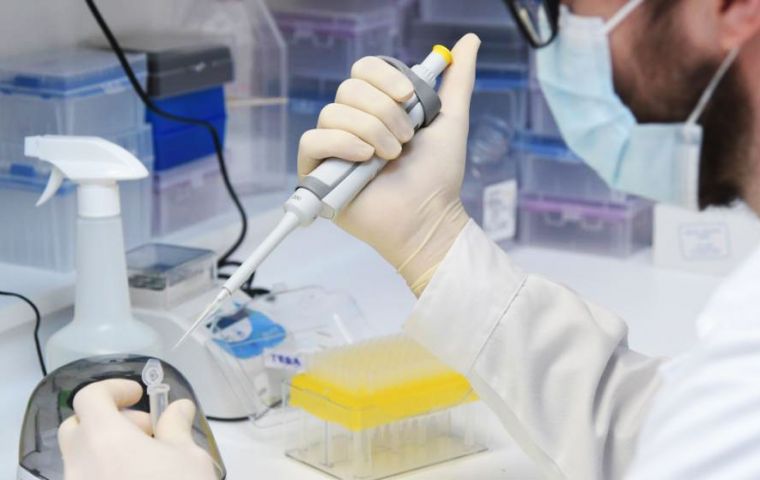MercoPress. South Atlantic News Agency
Scientists report Uruguayan variant of coronavirus
 P.6 has also been detected in Spain and in the US
P.6 has also been detected in Spain and in the US Researchers from Montevideo's Pasteur Institute have detected an “Uruguayan variant” of the coronavirus, which ”would have contributed to the first wave.”
A report released Monday states that “a Uruguayan variant of SARS-CoV-2 would have contributed to the first wave of COVID-19 registered in the country at the end of 2020,” according to a study by the Interagency Task Force (GTI) on Genomic Surveillance.
The Uruguayan variant has been named “P.6” but no Greek alphabet denomination has yet been given to this particular strain, which is estimated to have appeared around November 9 in Montevideo.
It then went on to other departments (provinces) within Uruguay and cases have also been reported in the United States and Spain. This Uruguayan variant represented 26% of the samples of positive cases in December, but rose to 76% in February.
The strain was recorded “until April 2021 and was the predominant one until March 2021, when the introduction and dissemination of P.1 [Manaus, later renamed “Gamma”] displaced it. There have been no new records of P.6 after the end of April,” the report added.
Biologist Natalia Rego quoted by Montevideo's daily El País has said that “the last detection of the P6 variant was on April 26.”
“In general, the mutations that gain more attention tend to occur in countries with millions of inhabitants and at times of high community circulation of the virus, but, however unlikely, these things happen and here they happened,” Rego added.
The name P.6 has been granted by the international scientific community last week and it stems from the fact that “it derives from variant B.1.1.28, originated and widely distributed in Brazil during 2020. B.1.1.28 , in turn, later generated the emergence of new variants, which were initially designated as P.1 (gamma) and P.2 (zeta),” the report highlighted.
“The Uruguayan variant includes two relevant mutations that are located in the Spike protein, which could be associated with increased transmissibility. One of the mutations has also been detected in other variants of the world, increasing its frequency towards the end of 2020, which would support the idea that it can give it greater transmission capacity,” it went on.
The Ururguayan strain is believed to have been the dominant one in the country between January and February 2021, but it waned down as P1 crawled in.
The Montevideo scientists also underlined that “P.6 was discovered in retrospect, several months after its emergence,” hence the importance of real-time surveillance, “which allows the identification of new more variants. near the time they appear.”




Top Comments
Disclaimer & comment rules-

Read all commentsAnd the Spike protein is created by what? The body's response to a toxic, experimental “vaccine?” Can you report on whether the “variant” has been discovered only in “vaccinated” people, or also in people who think?
Aug 06th, 2021 - 02:05 pm 0Commenting for this story is now closed.
If you have a Facebook account, become a fan and comment on our Facebook Page!